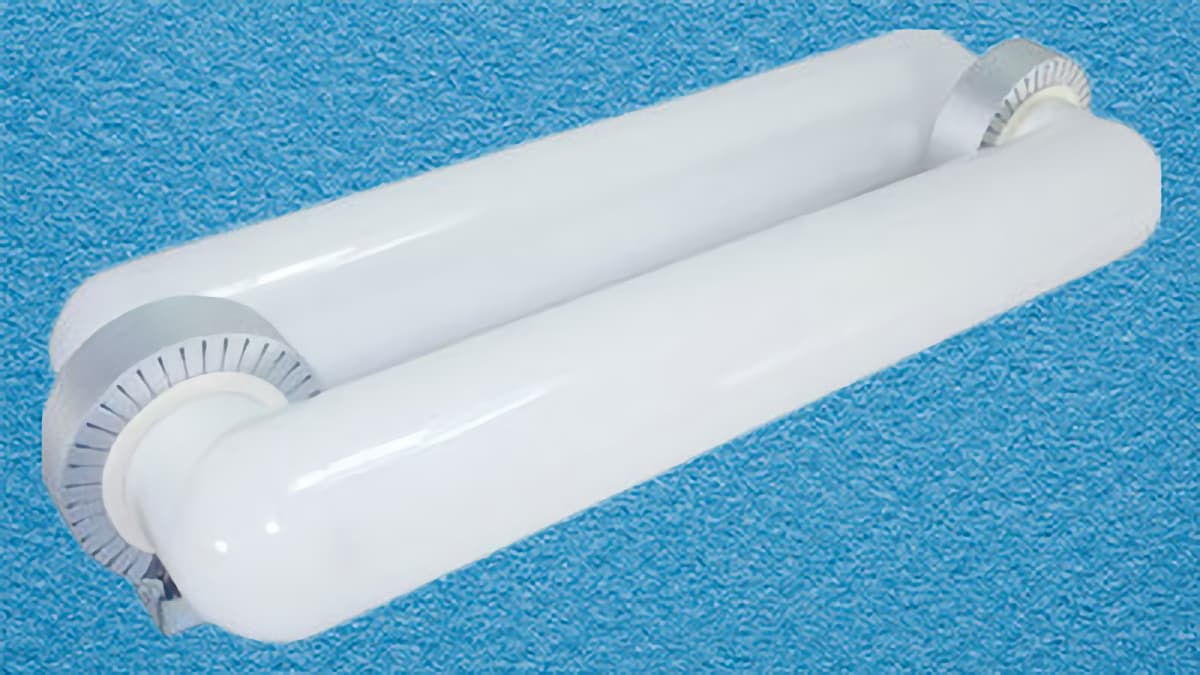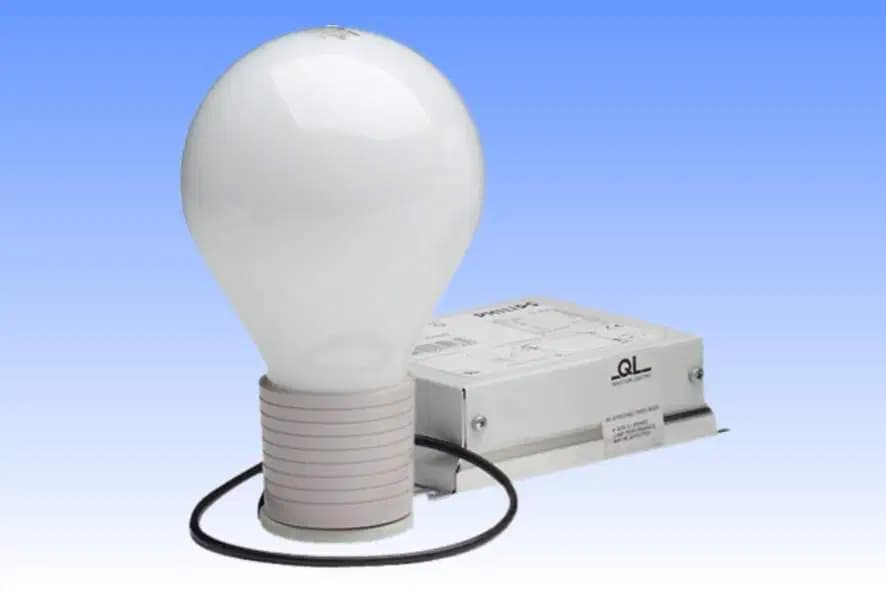
Induction lighting has its roots in 19th century science. The principle of electromagnetic induction was introduced to the world by Nikola Tesla in the 1890’s. Tesla once lit 200 lamps without wires from 25 miles away.
A fluorescent lamp without electrodes or filaments. Rings with magnetic coils create an electromagnetic field using a high frequency generated by the electronic ballast. This field goes around the glass filled tube. Electrons discharged by the magnetic coils collide with mercury atoms inside the tube and become excited. These electrons give off energy in the form of invisible UV light. The conversion to visible light occurs when it passes through a phosphor coating on the inside surface of the tube.

The lamp therefore relies on the fundamental principles of gas discharge and electromagnetic induction to produce light. As a result, each lamp offers an unmatched lifespan. They can last longer that 100 incandescent bulbs, 5 HID, or 5 typical fluorescent lamp changes.
Due to major advancements in LED technology, induction is already being phased out across the nation, and therefore is already considered obsolete by most lighting design professionals.
How Can We Help?
Industrial Light and Power is here to answer any questions that you may have. We take pride in our adaptability and service so if you don’t see something you’re looking for feel free to ask us about it.





